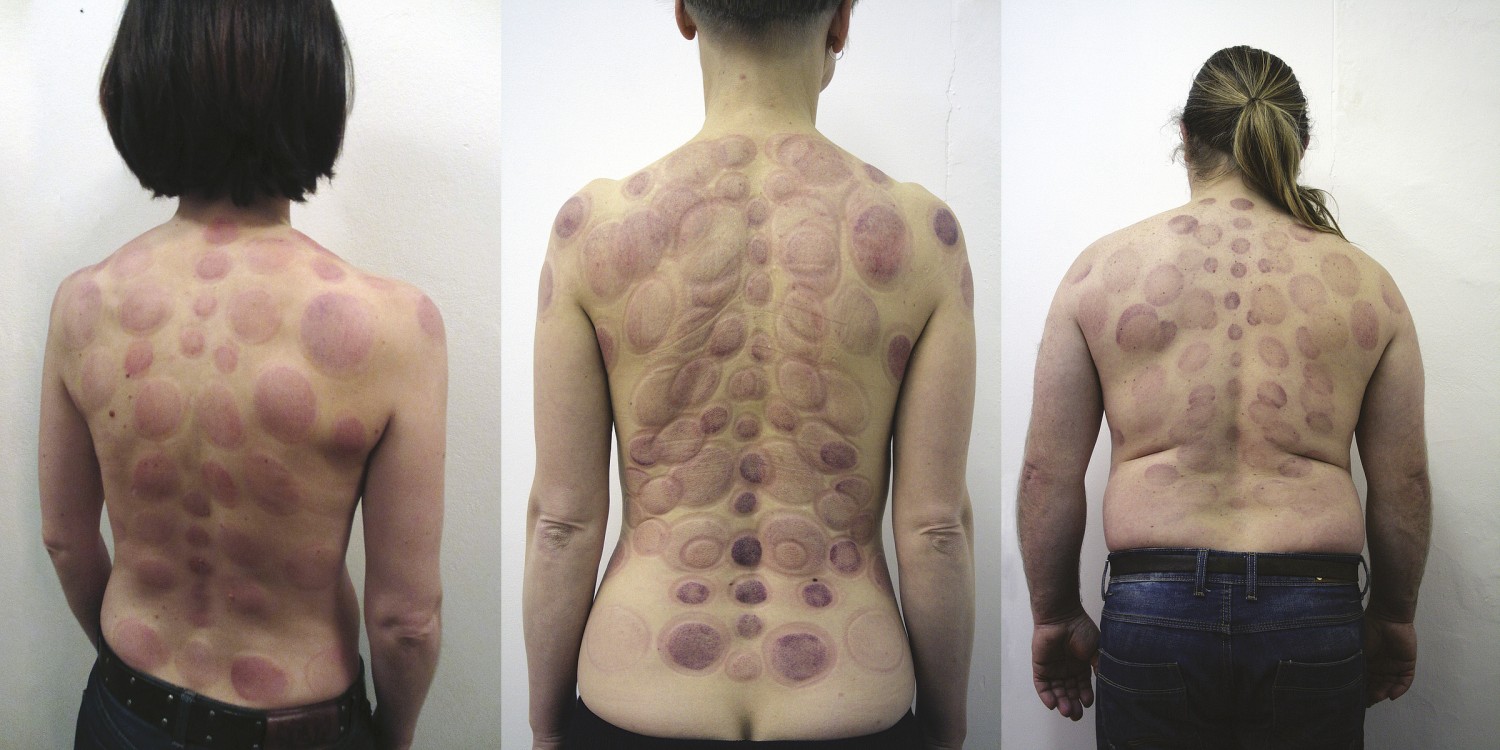
25.09.2015 19:00:00 - 21.11.2015
Photographs
We all carry on our backs the stress we feel from the story we have lived. Some backs are beautiful, but it comes at a cost.
The circles on the backs are made by taking a vessel with a round opening, which are then placed on the skin and the air is removed. Where the tissue is perfused with blood, nothing happens. In places where various bodily wastes have accumulated, the tissue and the capillary veins are inelastic, leathery and fragile. When such a place becomes engorged, the veins burst, and the blood spills into the area beneath the skin to form bruises. Some of it evaporates into the vessel; some of it is absorbed by the lymphatic system.
Tissue usually becomes clogged in places where it is constricted. It does so not on its own but because of membranes located throughout the body. We get the same effect when we wrap a piece of foam rubber in plastic foil that we pull tighter and tighter until the pores in the foam rubber become constricted. This is more or less how it works.
The system of membranes responds to stress by constricting, sometimes by as much as 250 kilograms per square centimeter. It can completely twist our whole body. If a part of the body constricts itself to the point of becoming clogged and we then place a cup or a jar with a vacuum on that spot, the tissue cannot withstand the pressure and blood begins to flow. Sometimes lymph as well.
Membranes respond to acute stress, but they also remember earlier stress, including the original one. What is more, acute stress is often a derivative or copy, a creative offshoot of the original stress. And this original stress dates back to the time when the young child was surrounded by its parents.
Although parents are not responsible for everything, they represent the child’s first interpersonal experience, during which it forms a whole series of habits that influence its future life, including the places, relationships and situations we find ourselves in.
These photographs of deformed backs can be called pictures of our inter-subjectivity, or imprints of our bio-psycho-social identity... or subcutaneous records of our suffering.
The skull on the speaker perhaps most recalls death. But here it represents parental deadening, which is actually life-giving. It creates obstacles that you have to learn from or you will never overcome them. The skull represents what the “parents’ voice” is saying, and the speaker is the voice itself, its sound.
In the broader sense, “parents’ voice” isn’t just how parental behavior influences children. It also includes biological, innate and genetic contents, the mood within the family – all of which is transmitted from generation to generation.
Beauty of the damage or The existential body, metal pipes
The role – The Roll, video, 73 s.
Handling a toilet paper role is a strongly personal gesture. Having been initiated by parents, it continues to develop in the perfect privacy of the toilet, free of other people's advice and consultations. It completely suits individual needs that - undistorted in the safety of the lavatory seclusion - project themselves in the trajectories of movement, the agility of one's fingers, the amount of paper used...They also reflect very well the atmosphere outside the toilet room – the environment from which they originate.
Text written by Jan Turner and edited by Ivan Mečl